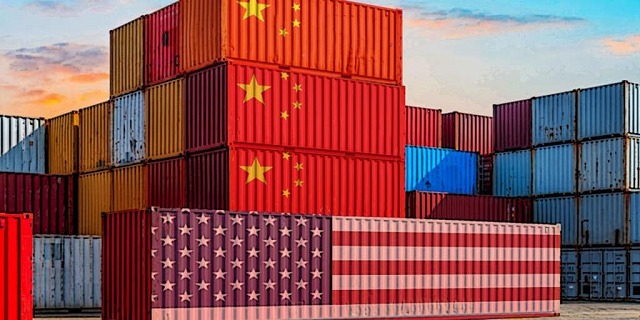The trade fight between the United States and China intensified Monday as the two economic superpowers hit each other with their biggest round of tariffs yet.
The Trump administration imposed new 10% tariffs on $200 billion of Chinese goods just after midnight ET (noon in Beijing), spanning thousands of products, including food seasonings, baseball gloves, network routers and industrial machinery parts.
China retaliated immediately with new taxes of 5% to 10% on $60 billion of US goods such as meat, chemicals, clothes and auto parts.
The moves are a significant escalation in the growing conflict between the world’s top two economies.
“We are squarely in the midst of the ‘it’ll get worse before it gets better’ phase,” Aninda Mitra, senior sovereign analyst at BNY Mellon Investment Management, said in a note after the latest tariffs were announced last week.
President Donald Trump’s waves of new tariffs on China now apply to over $250 billion of Chinese goods, roughly half the amount the country sells to the United States. The latest round affects thousands of products bought by US consumers, including hundreds of millions of dollars of furniture and electronics imports.
The US tariffs imposed earlier in the year mostly hit industrial goods.
The measures are meant to punish China for what the Trump administration says are unfair trade practices, such as intellectual property theft.
Beijing has rejected the US assertions, accusing the United States of protectionism and bullying. It has fired back with tariffs on American goods worth more than $110 billion.
The Trump administration has made “false accusations” and sought to “impose its own interests on China through extreme pressure,” the Chinese government said in a lengthy white paper published Monday about the two countries’ trade relationship, according to state news agency Xinhua.
Further escalation is already looming.
The latest round of US tariffs is set to increase at the end of the year from 10% to 25%. China hasn’t yet spelled out how it will respond to that.
Trump has also threatened tariffs on another $267 billion of Chinese products. That would mean the US measures effectively cover all China’s annual goods exports to the United States (the total for 2017 was about $506 billion).
China, which imports a far smaller amount from the United States, is running out of new products to target, but analysts say it still has other options to retaliate.
They include charging even higher tariffs, imposing import quotas, restricting Chinese citizens’ travel to the United States for study and tourism, and slashing taxes for companies affected by the tariffs.
‘Deadlock’
Trump administration officials have said that the ultimate goal is to achieve free trade with zero tariffs and zero subsidies on both sides. But analysts say Beijing is becoming more suspicious about US intentions.
“China is growing concerned that the US motivation is now trying to keep China down and contain it,” Timothy Stratford, a managing partner at law firm Covington & Burling in Beijing, said last week. “I expect that we’re going to have a deadlock for some time.”














